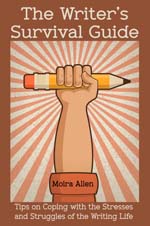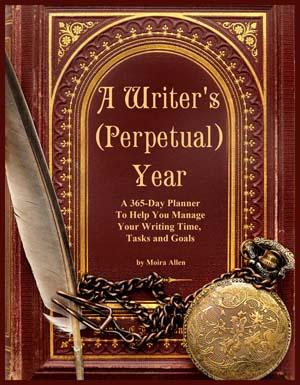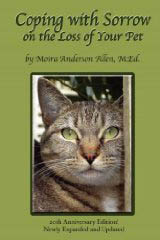 Your Guide to a Successful Writing Career
| |||
|
by Eugie Foster Smack dab in the middle of what Jean Piaget called the "Period of Concrete Operations,"1 their thought processes are becoming more logical, flexible, and organized, closely resembling that of adults. Tweens are capable problem-solvers and possess a heightened awareness of gender -- theirs and their peers -- with the corresponding social expectations regarding gender roles and identities. Furthermore, as their reasoning and critical analysis abilities mature, they start developing an interest in social and cultural issues2, facilitated by the availability of greater levels of information from the Internet and the media, as well as peers and parents. Today's tweens are sophisticated youngsters, different from their older sibling in the extent of their knowledge, communication savvy, expectations, and consumer power -- spending on average $9 a week in addition to the influence they have on household and family purchases3. With priorities motivated by belonging, freedom, power, and fun4, their choice in entertainment, clothes, and recreations are affected by image-conscious attitudes of do's and don'ts, conveyed and communicated by the lightning-fast information outlets of the modern age. And they tend to resent parental interference in their choice of clothing and other fashion statements -- clashes of identity and individuality that once fell exclusively into the realm of the teenager. The publishing industry has become aware of the economic potency of this burgeoning market and has responded accordingly. Tweens are independent readers, at various levels of reading ability. Strong readers in that age group are already capable of comprehending adult material, and are drawn to the tone and voice of YA material, while at the same time, they (and their parents on their behalf) are less interested in the overt sexuality, dating, and relationship content prevalent in works aimed at teens. Two distinct approaches to marketing to tweens have emerged in publishing, differentiated by the line between magazines and books. Writers interested in reaching a tween audience should be aware of the disparities, limitations, and content needs of both. Tween magazines, such as Girl's Life and American Girl, share the overall look in layout and feel of YA magazines, with articles on fashion, decorating how-to's, celebrity profiles, and quizzes. However, the fashions featured tend to be less risqué and provocative than that of teen 'zines, and the content retains a focus on families and friends similar to that commonly seen in magazines aimed at younger children. Overall, material tends to be less edgy than for YA publications, with romantic relationships absent or couched humorously, and inter-family (especially inter-sibling) relationships providing the majority of relationship-generated conflict. Articles and stories that examine controversial topics, such as drug use, self-mutilation, and eating disorders, are uncommon -- in some tween magazines still taboo. Those that appear take pains to address such subjects carefully and sensitively, typically from a personal viewpoint and borderline didactic in message. The tween magazine phenomenon seems to be an exclusively girl-oriented one at this time. Except for comic books and graphic novels, magazine publishers have been unable to attract tween boys. Boy's Life, for example, targets that age group, but what it publishes frequently lacks the "hip" voice that characterizes tween magazines. Book publishers have seen success with male tweens in the high-interest novel. Tween books for boys are short, with easy-to-read vocabularies, and contain a lot of fast-paced action. They include subject matter with a high appeal to boys -- video games, sports, etc. -- and favor humor. Additionally, the majority of titles put out for tween boys are nonfiction. Tween books for girls, unlike tween magazines, focus on romantic relationships. They are considered such an essential ingredient that in order for a tween manuscript to receive serious publication consideration, it must typically contain at least some romance element. However, tween books still lack the pronounced sexual content found in YA novels, typically relegating amorous behavior to the arenas of hand-holding, first kisses, and dances. Tween books also tend to have more parent-child conflict than tween magazines, which prefer parental relationships to maintain their childlike, harmonious overtones. When writing for the tween market, keep in mind that your audience is at a crossroads. Tweens consider themselves to be as mature as teens with regard to fashion and attitude, but they are not yet at an age when sexual relationships and dating play a major factor in their interests. It also bears mentioning that tween books are a subset of middle-grade novels, not a replacement for them. Tween books have many storyline and theme commonalities with traditional, middle-grade novels. A middle-grade manuscript that lacks the "hip" voice, preoccupation with fashion, and pop-culture savvy that characterizes tween material is still perfectly viable. Writers shouldn't feel obligated to achieve a tween tone if your story or writing style isn't conducive to it.
This article may not be reprinted without the author's written permission. Eugie Foster is a short-fiction writer specializing in genre and children's literature. She has sold more than a dozen stories to the Cricket Magazine Group, including Spider, Cricket and Cicada, as well as to an assortment of other children's magazines including Dragonfly Spirit and Story Station. She holds an M.A. in developmental psychology, has co-authored a textbook on child development, and is a frequent speaker at Dragon*Con's Young Adult Literature Track. She is a member of the SFWA and a former managing editor of Tangent. Foster maintains a list of children's SF/F magazine markets at her website, http://www.eugiefoster.com. |
| ||
| |||




